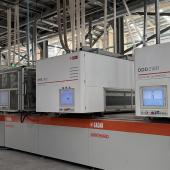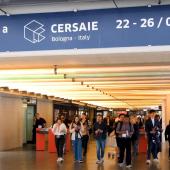Mohawk Industries sees a softer downturn
A better-than-expected fourth quarter reduced the company’s fall in revenue in 2024 to -2.7% year-on-year and allowed for a recovery in earnings.
A slight uptick in the fourth quarter of 2024 enabled Mohawk Industries to reduce its decline in full-year revenue compared to the -3.8% reported in the first nine months.
For the global flooring giant, 2024 closed with net sales of $10.8 billion, a decrease of 2.7% compared to the $11.1 billion of 2023. Adjusted EBITDA and adjusted operating income both increased by 0.7% versus 2023, while adjusted net earnings grew by 5.1% to $617 million. The company generated $680 million of free cash flow, ending the year with approximately $1.6 billion in available liquidity.
Chairman and CEO Jeff Lorberbaum noted that these results exceeded expectations, “thanks to our sales actions, marketing initiatives and new product introductions, as well as significant restructuring efforts and measures to lower costs and improve productivity. This was in spite of persistently unfavourable market conditions throughout the year. Consumers continued to limit large discretionary purchases, and consumer confidence remained constrained by cumulative inflation, economic uncertainty and geopolitical tensions. Residential demand remained soft in all our markets, both in new home construction – due to higher home costs and interest rates – and in remodelling.” During 2024, existing US home sales fell to a 30-year low.
For the Calhoun, Georgia-based group, commercial sales also declined during 2024, though they remained higher than residential remodelling.
The Global Ceramic Segment
At the end of 2024, the Global Ceramic Segment recorded net sales of $4.2 billion (-1.7% versus 2023), maintaining a 39% share of total company revenues and confirming its status as the world’s largest ceramic tile producer, with plants in the USA, Mexico, Brazil, Italy, Spain, Bulgaria, Poland and Russia, and brands including American Olean, Daltile, Marazzi, Ragno, Emilgroup, Eliane, Elizabeth, Vitromex, Kai and Kerama Marazzi.
As Lorberbaum noted, the Segment’s operating margin (6.9% for the whole year) was reduced by unfavourable pricing, partially offset by productivity gains and cost containment initiatives, which included reengineering products, improving processes and rationalizing higher cost operations.
Key actions taken by Global Ceramic in its main markets include an increased focus in the US on growing contractor sales through its ceramic service centres and strengthening its position with kitchen and bath dealers. In Europe, high-end product offerings and dedicated showrooms for the architecture and design community in major cities (the most recent Marazzi opening was in Rome in January) are driving commercial sales growth. Export sales outside the region are also on the rise.
In Mexico and Brazil, the integration of Vitromex and Elizabeth, acquired in 2023, has enhanced the product offering, sales structure and market strategies. With respect to Brazil, exports have improved following the weakening of the local currency, while a restructuring project is currently under way in Mexico that is expected to save approximately $20 million per year when completed.
Outlook for 2025
“Our industry has been in a cyclical downturn for multiple years, and we are confident that our markets will return to historical levels, though the inflection point remains unpredictable,” said Lorberbaum.
According to Mohawk Industries’ Chairman, the first quarter of 2025 will confirm ongoing softness in all markets, alongside heightened competition that will continue to place intense pressure on pricing. A market recovery may be delayed further into the year, even though both the US and Europe continue to face a housing shortage as well as a pressing need to update ageing homes after several years of postponed remodelling projects.
In the meantime, the company is proceeding with the development of new products designed to meet consumer demand and continuing with a restructuring program launched in 2023 (including the Mexican ceramic business) which will generate annualized savings of approximately $285 million when completed in 2026.
“As the world’s largest flooring manufacturer, we are uniquely positioned to manage this market cycle, pursue opportunities for long-term profitable growth and emerge stronger when housing markets improve,” concluded Lorberbaum.
|
Segment |
Q4 2024 |
% Change |
2022 |
2023 |
2024 |
% Change |
Share on |
|
Global Ceramic |
1,008.2 |
+1.5% |
4,307.7 |
4,300.1 |
4,226.6 |
-1.7% |
39.0% |
|
Flooring North America |
937.2 |
+2.8% |
4,207.1 |
3,829.4 |
3,769.9 |
-1.6% |
34.8% |
|
Flooring Rest of the World |
691.8 |
-2.1% |
3,222.3 |
3,005.6 |
2,840.4 |
-5.5% |
26.2% |
|
Consolidated Net Sales |
2,637.2 |
+1.0% |
11,737.1 |
11,135.1 |
10,836.9 |
-2.7% |
100.0% |
Cover photo: Marazzi - The Top
Did you find this article useful?
Join the CWW community to receive the most important news from the global ceramic industry every two weeks
























